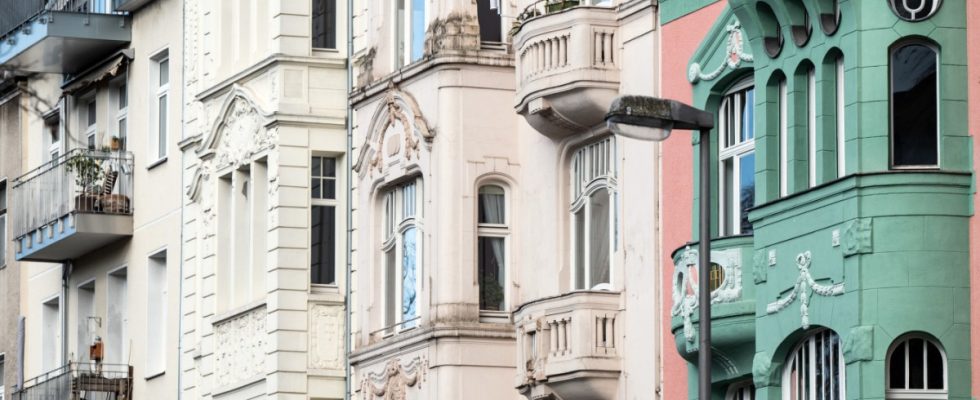Prices for residential property in Germany fell at a record pace last year due to weak demand as a result of high building interest rates. They fell by an average of 8.4 percent compared to 2022, as the Federal Statistical Office announced on Friday. This is the sharpest decline since the time series began in 2000 and also the first since 2007. “From 2008 to 2022, residential property prices rose continuously on average over the year,” it said. Due to interest rate increases by the European Central Bank (ECB) in the fight against high inflation, construction loans have become significantly more expensive.
“The price decline is not an expression of oversupply, but rather an expression of worsening affordability,” said LBBW economist Martin Güth. In 2024, prices are likely to fall slightly from their high level. “But the vast majority of the decline is behind us,” said Güth. The decline has already slowed recently: in the fourth quarter, prices only fell by 7.1 percent compared to the same period last year, after minus 10.1 percent in the third quarter and minus 9.6 percent in the second quarter. From the third to the fourth quarter, prices fell by 2.0 percent. They fell by 2.1 percent for existing properties and by 1.0 percent for new buildings.
Real estate became cheaper in both cities and rural areas from October to December. In the top 7 metropolises (Berlin, Hamburg, Munich, Cologne, Frankfurt/Main, Stuttgart and Düsseldorf), prices for single- and two-family homes fell by 9.1 percent compared to the same quarter of the previous year. 5.8 percent less had to be paid for condominiums. In sparsely populated rural districts, single- and two-family houses were 6.9 percent cheaper, and apartments were 2.8 percent cheaper. In urban districts, the decline was particularly pronounced for one- and two-family homes at 11.0 percent, while 7.1 percent less had to be paid for condominiums.
According to experts, overall real estate prices will also fall this year, although not as much. They are likely to fall by an average of 1.7 percent, according to a survey of 14 real estate analysts by the Reuters news agency. An increase of 3.0 percent is expected for 2025. “In general, we expect a longer phase of bottom formation,” said ING chief economist Carsten Brzeski. “The tense situation in the construction sector, with labor and material costs still high, is likely to lead to a shortage of supply, which is likely to put upward pressure on prices.”

